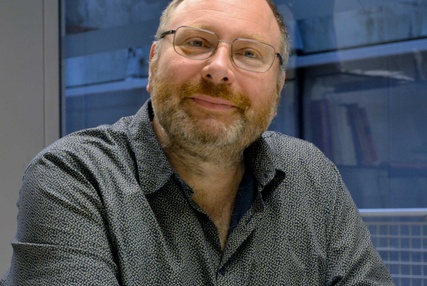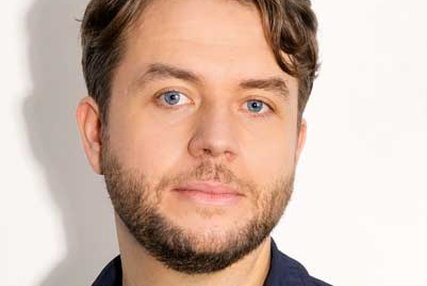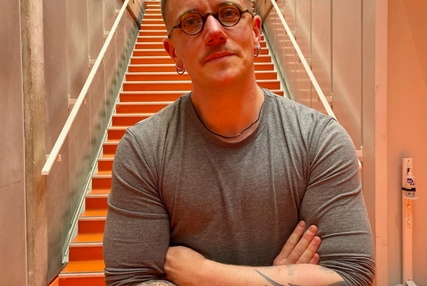C’est la rentrée des classes et, avec elle, l’inauguration d’une nouvelle résidence en recherche artistique : celle de Sasha J. Blondeau. Une résidence qui ne ressemble à aucune autre, puisqu’il ne s’agit pas ici de synthèse ou de traitement sonore, ni d’analyse ou de suivi de mouvement, ni d’aide à l’orchestration ou à la composition. Ou plutôt, si, il s’agit bien d’aide à la composition, mais dans un aspect jusqu’ici assez négligé : l’élaboration conceptuelle de la forme, abstraction faite de tout matériau préétabli ou idée préconçue.
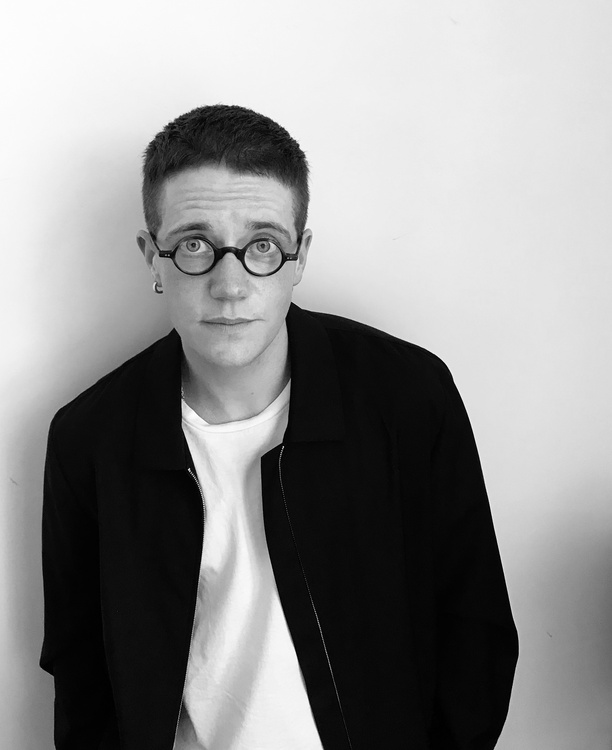
La forme est sans doute l’un des grands impensés de la création musicale contemporaine – et ce depuis un siècle. Bien des aspects de l’écriture musicale ont été remis en cause, retravaillés, revisités, voire revus de fond en comble : mélodie, harmonie, rythme, timbre, jeu instrumental et ainsi de suite. Mais, que ce soit parce que les compositeurs voulaient procéder pas à pas, ou faute de véritable idée à ce sujet, l’élaboration de la forme est longtemps restée cantonnée à des procédés éprouvés : la seconde école de Vienne est ainsi restée fidèle aux canons des formes classiques, les sériels ont déduit la grande forme de la petite (de manière quasi directe), les répétitifs sont allés chercher leurs formes longues dans les musiques extra-européennes. Certes, les spectraux ont innové avec le processus – mais ce processus, souvent en rapport avec l’analyse du son, relève à bien des égards d’une forme légitimée par le matériau utilisé.
Aujourd’hui encore, bien des compositeurs convoquent les formes archétypales : en arche, variations, miroirs, et autres triturations du matériau. D’autres se tournent vers une approche plus intuitive, se laissant porter par le matériau et ses développements au fil de l’écriture. D’autres encore préfèrent la métaphore extramusicale, ou suivent plus ou moins scrupuleusement un modèle mathématique (crible, probabilité, fractales, etc.), ou s’inspirent des sciences physique, biologique, chimique… Nombreux sont ceux qui donnent à entendre un « voyage » ou une « trajectoire sonore ».
Aucune de ces approches n’a jamais satisfait Sasha J. Blondeau qui, dès son doctorat de composition préparé au sein de l’équipe Représentations musicales de l’Ircam-STMS, notamment en compagnie de Jean-Louis Giavitto, a commencé à élaborer des outils radicalement différents pour l’aider à produire des formes originales, et néanmoins susceptibles de proposer à l’auditeur des dramaturgies musicales perceptibles.
Son idée a donc été de concevoir un modèle spatial dans lequel s’inscriraient les potentielles idées ou formules musicales – même si les termes d’idée ou de formule sont trop connotés dans le microcosme musical : peut-être devrait-on plutôt parler de « concepts » ou de « modules » musicaux. Symbolisées chacune par un solide (en l’occurrence un tétraèdre, c’est-à-dire un polyèdre à quatre faces triangulaires), ces potentialités sont organisées dans l’espace les unes par rapport aux autres en fonction de leur proximité, voire de leurs similitudes lorsqu’elles existent. L’élaboration de la forme consiste alors à imaginer un parcours dans l’espace, sautant d’un tétraèdre au suivant. Très grossièrement, d’un tétraèdre donné, la·e compositeur·rice peut passer soit à son voisin – auquel cas on aura un sentiment de continuité, du moins sur certains aspects du matériau –, soit à un tétraèdre plus lointain – auquel cas ce sera davantage un sentiment de rupture. Pour bien comprendre le principe, il est nécessaire de préciser un peu plus à la fois le modèle et la manière de l’utiliser.
D’abord le modèle : un tétraèdre a 4 sommets. Chacun de ces sommets représente un aspect du matériau : un pour le timbre, un pour la hauteur, un pour le rythme, et un pour la puissance. Chacun est décrit (déclaré, comme on dirait d’une variable informatique) par le compositeur, sous diverses formes : numérique, très descriptive dans le temps (évolution d’un spectre ou d’un rythme), ou même sous forme d’une expression langagière. Exemple : pour le timbre, je veux quelque chose qui s’apparente aux cuivres ; pour la hauteur, plutôt dans l’aigu allant vers le médium ; pour le rythme, animé et déséquilibré ; pour la puissance, dense, très directive et polarisée.
Deux tétraèdres peuvent ainsi avoir le même sommet – si la description déclarée d’une des variables (un aspect du matériau) est identique – voire deux ou trois – auquel cas ils partagent une arête ou une face. On peut ainsi constater visuellement leur proximité, sur la représentation spatiale que l’on aura établie à partir de tous les matériaux déclarés. De fil en aiguille, on obtient un graphe dans l’espace avec les divers tétraèdres déclarés, adjacents ou non, plus ou moins distants.
Ensuite, son utilisation.
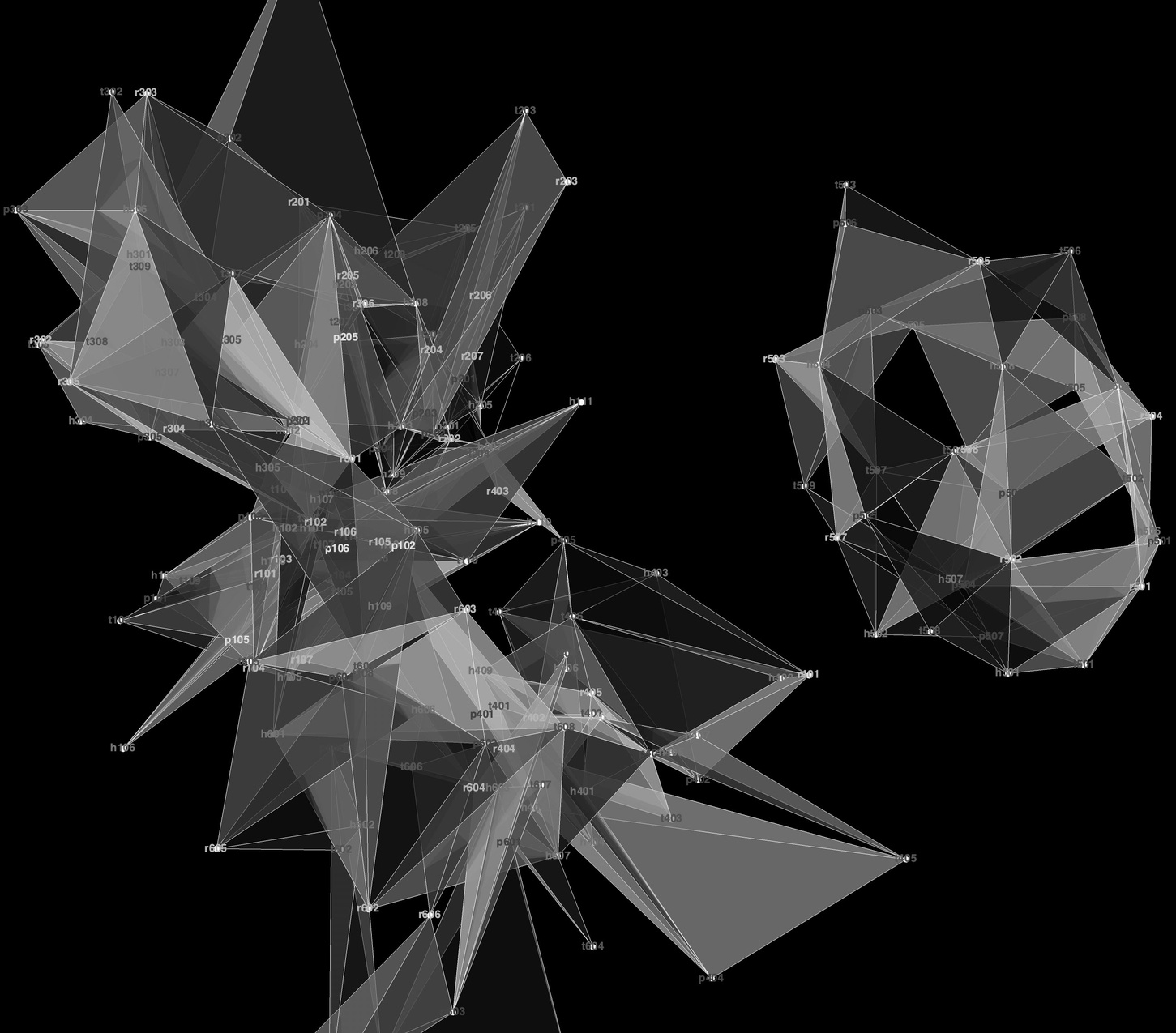
Espaces @ Sasha J. Blondeau
Première étape : déclarer différents concepts musicaux avec lesquels on veut travailler. On peut en déclarer autant qu’on le souhaite, même si on ne les utilise pas ensuite. On peut du reste être amenés à les changer ensuite, ou à en déclarer de nouveaux. Le modèle reste ainsi très souple face aux nécessités du moment.
Ce qui est intéressant ici, c’est qu’aucune note n’est portée sur le papier pour l’instant. Le concept musical n’existe pas réellement au sens où il est encore totalement abstrait – même si la·e compositeur·rice peut avoir une petite idée, celle-ci pourra évoluer, voire changer radicalement d’ici la fin du processus. Il y a là une forme de conceptualisation qui rappelle la relation établie par la sémantique entre un mot et son signifié : exactement comme le mot « table » donne une idée de la table, mais ne la décrit pas précisément (on ne sait ni sa taille, ni sa matière, ni sa couleur, ni son nombre de pied, ni son usage, parfois détourné).
Deuxième étape : les représenter dans l’espace – une étape à laquelle l’équipe Représentations musicales a largement contribué.
Troisième étape – et c’est finalement le cœur du réacteur – : imaginer une trajectoire au sein de cet espace. Une trajectoire cohérente et pertinente eu égard à la dramaturgie de la pièce projetée. Au passage, on remarque que le terme de « voyage musical » dans un « univers sonore » prend ici un sens nouveau ! Si l’on voulait faire un parallèle avec d’autres disciplines artistiques, on pourrait parler de « plan » d’un texte ou d’une maison ou de « story-board » d’un film ou d’une bande dessinée.
Quatrième étape : à présent que le plan est arrêté dans ses grandes lignes, il s’agit de rédiger. On pourrait presque parler de « réalisation », comme celle d’un film ou, dans un contexte plus musical, d’une basse à harmoniser. Ce n’est qu’à ce moment-là que des notes, ou des sons si l’œuvre est avec électronique, se matérialisent sur la partition, papier ou informatique.
Exactement comme deux romancier·e·s n’écriraient pas de manière identique les mêmes scènes ou les mêmes décors (mettant, selon leurs sensibilités propres, l’accent sur tels ou tels détails) et donc n’écriraient pas le même livre à partir d’un même synopsis ou plan détaillé, deux compositrice·eur·s produiront certainement deux pièces différentes à partir d’une même forme donnée. Un·e même compositrice·eur pourra même produire deux pièces différentes à partir d’une même forme, selon son humeur ou son inspiration du jour !
Au reste, la trajectoire choisie peut passer plusieurs fois par le même tétraèdre, sans que la réalisation musicale de celui-ci soit identique à chaque fois – influencée qu’elle est par le parcours suivi jusque-là ou, là encore, l’humeur du moment.
Naturellement, tout comme les plans d’un architecte peuvent évoluer au fil de la construction d’une maison, la trajectoire choisie pourra être amendée ou rectifiée à tout instant. Et même plus tard : constatant qu’un tronçon de trajectoire ne fonctionne pas pour aller d’un point à un autre du graphe, on pourra naturellement en tester d’autres, tout comme on peut emprunter différents itinéraires pour aller d’un lieu à un autre.
Aujourd’hui, si Sasha J. Blondeau affine cette méthode d’élaboration formelle au fil de ses compositions, iel a éprouvé le besoin de la remettre sur le métier – mais aussi de repenser plus largement la question de la forme et de sa conceptualisation en composition –, là où iel l’a conçue pour la première fois : au sein de l’équipe Représentations musicales, dans le cadre d’une résidence en recherche artistique. Quels outils permettent de contrôler et de contraindre une trajectoire dans ces espaces de qualités musicales ? Quels liens peut-on développer avec les représentations plus classiques sous forme de « timeline » ? Comment intégrer explicitement, dans ce type de représentations spatiales, des notions classiquement utilisées pour parler de la forme musicale comme l’attente, la surprise, le climax, le développement, le leitmotiv, le contraste ou la variation ?
Outre l’approfondissement et l’amélioration de la méthode, pour mieux la cerner et la définir, les enjeux de cette résidence sont aussi pour ellui de penser de façon plus générale des outils de conceptualisation formelle et d’aller à la rencontre de ses collègues compositrice·eur·s pour découvrir, questionner et réfléchir à leurs méthodes propres et à leurs pratiques.
Dans tous les cas, l’idée est d’explorer et de réfléchir à des méthodologies et des outils effectifs qui puissent devenir des médiums de pensée de la forme et de la dramaturgie.
Des mondes possibles
de Sasha J. Blondeau (enregistré au Centre Pompidou, 2021)



